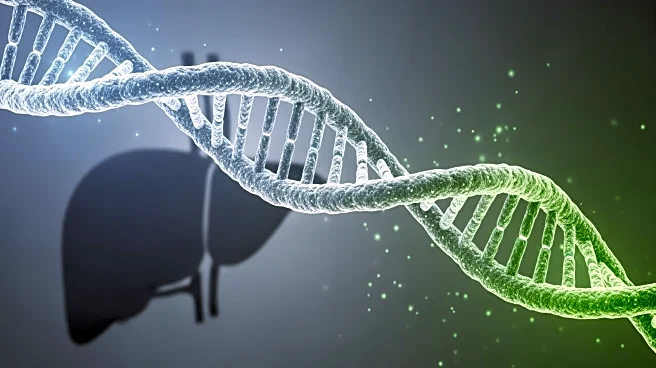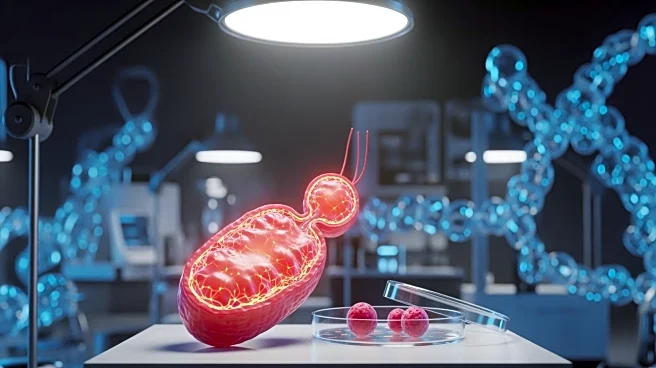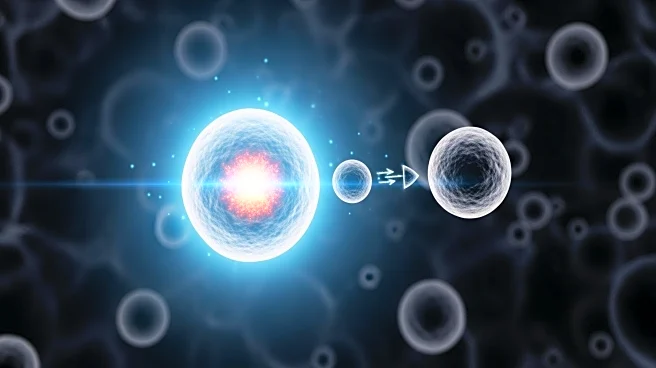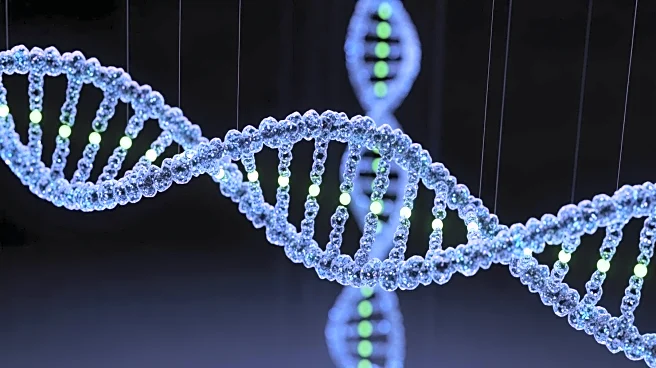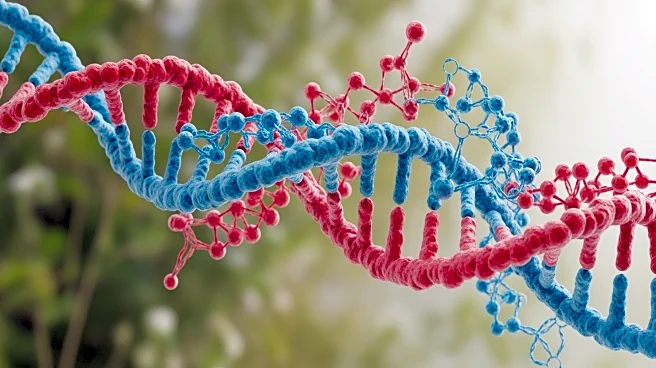What's Happening?
A study published in Nature has developed a method to enhance mitochondria transfer using super mitochondria-enriched extracellular vesicles (Super-EV-Mito). The research focuses on genetically engineering adipose-derived mesenchymal stem cells (MSCs)
to activate the CD38/IP3R/Ca2+ pathway, increasing the release of functional mitochondria into damaged cells. This approach aims to overcome limitations in mitochondria transplantation, such as selectivity in recipient cells and loss of mitochondrial activity. The study demonstrates that Super-EV-Mito contains more and better functional mitochondria, offering improved therapeutic potential for mitochondrial disorders.
Why It's Important?
The development of Super-EV-Mito represents a significant advancement in treating mitochondrial disorders, which are often challenging due to the complexity of mitochondrial function and genetic mutations. By enhancing the transfer of functional mitochondria, this method could improve cellular repair and recovery in affected tissues, offering a new therapeutic avenue for conditions like Leber's Hereditary Optic Neuropathy (LHON). The study's findings highlight the potential for stem cell-based therapies to address mitochondrial dysfunction, paving the way for innovative treatments that could improve patient outcomes and quality of life.
What's Next?
Further research is needed to explore the clinical applications of Super-EV-Mito in treating various mitochondrial disorders. Clinical trials may be necessary to assess the safety and efficacy of this approach in human subjects. Additionally, the study suggests potential applications in broader mitochondrial disease models, indicating a need for comprehensive studies to evaluate its effectiveness across different conditions. Stakeholders, including medical researchers and biotechnology companies, may focus on developing and commercializing Super-EV-Mito-based therapies.
Beyond the Headlines
The use of genetically engineered stem cells raises ethical considerations regarding genetic manipulation and its long-term effects. Discussions on the regulation and oversight of such technologies may emerge as they become more prevalent in medical treatments. The study also underscores the potential for stem cell therapies to revolutionize the treatment of genetic disorders, offering new insights into cellular repair mechanisms and their applications in regenerative medicine.



